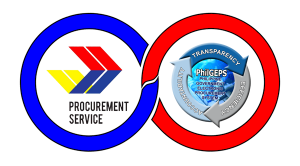Successful business-to-business marketing is tough to master. Entrepreneurs have plenty to manage when establishing their advertising strategy, including innovative demands, financial constraints, and network considerations. Business-to-business sales no longer require lengthy in-person sales sessions. Indeed, by 2025, eCommerce platforms are predicted to account for 80% of B2B transactions. E-Commerce advertising between companies is not the same as advertising to private customers. That is why we created this article to help you understand the tools and areas around B2B marketing.

What is Business-to-Business Procurement?
The process of procuring products and services from vendors is known as procurement. Contracts with providers are typically used for procurement. The purpose of procuring is to discover the best option for a firm while keeping costs affordable and the level of service up to standards. B2B procuring is obtaining products and services from third-party providers. B2B procurement may be used for various purposes, including obtaining the availability of novel goods and amenities, lowering expenses, and forming connections.
What is B2B eCommerce Marketing?
B2B eCommerce marketing refers to any advertising approach or media aimed toward a company or enterprise. This marketing method is often used by businesses that market goods or services to various companies or groups rather than consumers. B2B eCommerce marketing is the online promotion and interaction of your company with existing and future business clients.
Traditional brochures and promotional materials were formerly common forms of B2B marketing. Today’s B2B clients expect eCommerce enterprises to have outstanding web pages and digital marketing that delivers real worth. E-commerce businesses not providing such services will rapidly lose B2B transactions.
Comparing B2B and B2C Marketing
B2B and B2C advertising are significantly distinct. Marketing techniques for B2B and B2C companies and applications differ, as do the demographics they target and how they connect. Since there is considerable overlap, B2B eCommerce marketing may seem extremely similar to Business-to-Consumer advertising. Many broad methods, such as marketing via email, blogging, and online marketing, will apply to both populations, but the strategies vary.
B2B eCommerce Marketing
Business-to-business marketing focuses on the requirements, interests, and difficulties of individuals who buy as part of their company, rendering the business the client. B2B clients often have larger expenditures and are more inclined to return than B2C. However, B2B consumers sometimes take lengthier to investigate possible spending, and purchases frequently require approval from many persons.
B2C eCommerce Marketing
B2C advertising focuses on the requirements, preferences, and difficulties of private consumers who make purchases on their own behalf or on behalf of others, emphasizing the consumer as the target audience. Advertising for business-to-consumers is more centered on connecting topics with individuals who have the same interests. Unlike B2B, B2C focuses more on the changing interests of individuals than that on continuous requirements.
Strengthening Advertisements
Your B2B eCommerce venture, like any other online firm, will struggle without a strategy for online advertising. Since 57% of B2B customers are eager to obtain brand information and order online, according to Statista, marketing is now a key driver of B2B eCommerce conversion statistics. A good eCommerce marketing plan is required if you want to get new clients and boost revenue. A focused marketing approach can assist you in attracting the proper types of clients and efficiently growing the revenue you earn.
CRM Integration
An effective B2B eCommerce marketing plan must emphasize constant consumer experience enhancement. It involves optimizing as much as possible in the changing eCommerce landscape. Furthermore, B2B consumers want highly tailored sales and marketing methods that should continually align throughout the circumstances.
Loyalty Programs
Loyalty initiatives are another critical component of a B2B eCommerce advertising plan. Business-to-Business consumers on commercial business portals are naturally searching for long-term connections, which provides an excellent foundation for any reward systems. B2B incentive programs have a higher value over time than B2C loyalty programs since B2B clients often purchase bigger quantities.
Email Marketing
Email advertising is almost as adaptable as content advertising and, as a result, should be a key component of any B2B eCommerce marketing plan. According to research, email marketing outperforms all other online advertising strategies regarding profitability.
Inbound or Content Marketing
Content marketing in B2B eCommerce begins with the creation of superior descriptions of items. The result improves the visibility of your site in search engines like Google for a number of connected keywords. This also enables visitors to arrive at educated buying choices. It is believed that detailed information is highly vital for up to 90% of customers and even greater for B2B purchasers.
Some examples of inbound marketing include…
- Website Blog Content
- Website-published Audio-Visual Presentations
- Paid Advertisements
Account-Based Marketing
This type of strategy is a pillar of a comprehensive B2B approach that combines a variety of advertising and analytics operations to seek out more chances with your major clientele. Account-Based Marketing requires you to concentrate on tailored purchasing experiences, ongoing input evaluation, and client conversion and loyalty.
Social Media Marketing
While B2B consumers are not as inclined as customers in the B2C sector to complete immediate purchases via social media, it may still be utilized to raise recognition and cultivate prospects. B2B suppliers ought to think about how they can reach entrepreneurs, company executives, and managers using social media and how to maintain these connections with timely material.

B2B Marketing Tips
Plenty of individuals are intrigued by finding out certain approaches to marketing but forget to develop an overarching strategy. This poses a problem since the strategy allows your techniques to function synergistically to produce long-term outcomes.
Conduct a Competitor Analysis
Analyze the websites of other businesses and the services that they provide. How comprehensive are the products they sell? Do they use a blog to advertise their business, and if yes, how frequently do they post? You may examine your competition’s data and identify where the flow is coming from by using SEO tools like Ahrefs.
Discover Your Pricing Strategy
Customers can easily compare costs; therefore, pricing must be carefully considered. You ought to have a greater understanding of what your prospective customers can spend money on. You don’t want your target market to think your items are costly.
Scale Your Content
When you create content that is tailored to your most critical client categories, your audience is more likely to discover and respond positively to that material. This technique performs superior to a “one-size-fits-all” method since B2B customers appreciate the material that is particular to their sector.
When combined with term analysis and solid SEO authoring, releasing this sort of material for eCommerce sites increases tailored organic visitors – and a part of that traffic turns into purchases. As you raise the quantity of targeted material you create, you boost the volume of organic traffic your material can bring in.
Prune More Traffic
If your company hadn’t recently performed a content audit and deindexed poor-quality webpages from your B2B eCommerce site, you’re well past due. Choosing an appropriate website material is a sure method to improve the quality of your work. The quantity of “index inflation” on a website influences Google’s perception of overall site performance. Google does not like to see a lot of empty and repetitive material, yet B2B eCommerce enterprises have a lot of their online presence.
Optimize Your Search Engine Results Page (SERPs)
This method not only increases your SEO but it also typically boosts your rate of conversion. Google’s indexing algorithm for mobile devices is now the default for all web pages. You must optimize both your mobile and desktop user experience and performance if you want to boost your discoverability in results pages for search engines (SERPs).
Why Become a Seller in Shoppable Business
- Access to a large customer base – giving businesses the opportunity to expand their reach and increase sales
- Increased visibility and brand awareness – a platform for businesses to showcase their products/services and potentially attract new customers
- BNPL (Buy now, Pay later) – grow your ASP; buyers/companies can apply for a loan up to ₱150,000.00
Why Become a Buyer in Shoppable Business
- Wide product selection from different categories – a one-stop-shop solution for businesses’ procurement needs
- Save company time and money – Customized orders, RFQ for specific quantities, bundles, configuration, Track their orders, view purchase history
- Need it now but limited budget – BNPL apply and get up to ₱150,000.00

It takes time to develop a solid eCommerce marketing plan, and you could struggle to get it exactly the first time. Choose one method and test it to see how well it works for you. If that approach fails, go on to the next thing on the list until you find a strategy that works for your company.
These tactics are effective, but they are far from thorough. You should develop a multi-pronged eCommerce advertising plan targeted to your business and target demographic for the greatest outcomes. Do you need assistance making it happen? Shoppable Business is always delighted to give a free, customized proposal for your company’s objectives and requirements. Seller or consumer, you can join the platform and create marketing solutions effectively.









